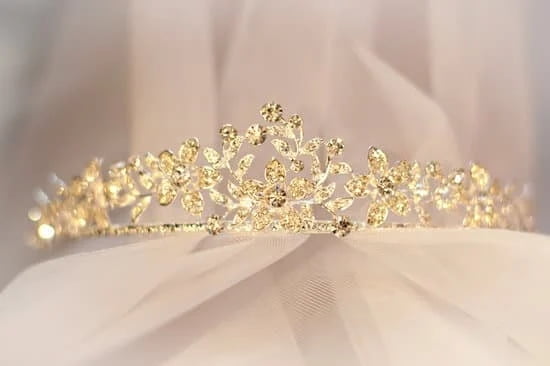The history of old pawn jewelry dates back to ancient times and holds significant cultural value. Originating from Native American tribes, old pawn jewelry has evolved over time, becoming a symbol of heritage and tradition. This article will explore the origins, cultural significance, techniques, and materials used, as well as famous examples of old pawn jewelry. Additionally, we will delve into how old pawn jewelry has evolved over time and its modern-day relevance.
Old pawn jewelry carries a rich history that reflects the artistic traditions and craftsmanship of the indigenous people who created these timeless pieces. From intricate designs to the use of specific materials, every aspect of old pawn jewelry tells a story about the culture and heritage from which it originated.
Throughout this article, we aim to shed light on the role of old pawn jewelry in Native American culture and how it has preserved traditional artistic techniques. Furthermore, we will discuss how to identify authentic old pawn jewelry and appreciate its significance in today’s society. Follow along as we embark on a journey through the captivating history of old pawn jewelry.
The Origins of Old Pawn Jewelry
Old Pawn Jewelry traces its origins back to the Native American tribes of the Southwest United States. The tradition of creating and trading jewelry has been an integral part of Native American culture for centuries, with each piece reflecting the artistic style and craftsmanship of the specific tribe that created it.
The rich history of old pawn jewelry is rooted in the deep spiritual and cultural beliefs of the Native American people, making each piece a symbol of heritage and tradition.
The practice of creating old pawn jewelry began as a form of personal adornment and as a means of displaying wealth within the Native American communities. These pieces were often made using materials found in nature, such as turquoise, coral, shell, and silver. The techniques used in creating old pawn jewelry were passed down through generations, with each artisan adding their own unique touch to every piece they crafted.
Although the term “old pawn” may suggest that these pieces are unwanted or abandoned, it actually refers to a traditional method of collateral lending practiced by Native Americans. In the past, individuals would offer their old pawn jewelry as collateral for short-term cash loans.
If they were able to repay the loan within a specified time period, they would then reclaim their treasured jewelry. This practice played a significant role in preserving the art form and allowed for the continued creation and trade of these beautiful pieces throughout history.
The Cultural Significance of Old Pawn Jewelry
Old Pawn Jewelry holds a rich cultural significance within Native American communities, serving as more than just adornment. For centuries, these pieces have been an integral part of tribal traditions and customs, representing the wearer’s social status, spiritual beliefs, and connections to the natural world. The history of old pawn jewelry is deeply intertwined with the cultural identities of various Native American tribes, making it a cherished and revered art form.
The cultural significance of old pawn jewelry can be observed in the intricate designs and symbols used in each piece. From the use of specific gemstones to the incorporation of traditional motifs such as feathers, animals, and nature-inspired patterns, every element holds deep meaning within Native American culture. These symbols often reflect a connection to tribal heritage, spirituality, and important life events, making old pawn jewelry an essential part of ceremonial attire and storytelling.
Furthermore, old pawn jewelry has played a vital role in preserving indigenous traditions and passing down ancestral knowledge through generations. As a form of wearable art with historical value, these pieces have become treasured heirlooms that carry the legacy of Native American craftsmanship. The continued practice of creating and wearing old pawn jewelry serves as a tribute to the resilience and enduring heritage of indigenous peoples.
| Aspect | Example |
|---|---|
| Cultural Symbols | The use of turquoise in old pawn jewelry symbolizes protection and healing in many Native American tribes. |
| Generational Legacy | Old pawn jewelry is often passed down from one generation to another as a way to preserve family history and traditions. |
| Social Status | In some tribes, specific types of old pawn jewelry were reserved for leaders or individuals with significant societal roles. |
Techniques and Materials Used in Old Pawn Jewelry
Old pawn jewelry is known for its unique techniques and materials used in creating timeless pieces of art. The craftsmanship involved in making old pawn jewelry has been admired for centuries, and the materials used are a reflection of the culture and traditions of the Native American people.
Techniques
The techniques used in old pawn jewelry include hand-stamping, filigree work, repoussé, and soldering. Hand-stamping involves using a small metal stamp to create intricate designs on the surface of the metal.
Filigree work involves twisting and curling thin threads of metal into delicate patterns, while repoussé is a technique that involves hammering designs into the metal from the back, creating raised relief. Soldering is also commonly used to join different pieces of metal together to create a single piece of jewelry.
Materials
Traditional materials used in old pawn jewelry include sterling silver, turquoise, coral, and other semi-precious gemstones. Sterling silver is the most commonly used metal due to its malleability and durability. Turquoise holds great significance in Native American culture and is often set in silver to create stunning pieces of jewelry. Coral is also highly valued and symbolizes prosperity and success in some Native American tribes.
Symbolism
The materials used in old pawn jewelry are not just chosen for their aesthetic appeal but also for their cultural significance. For example, turquoise is believed to offer protection and bring good fortune, while coral symbolizes life essence and fertility. The use of these materials reflects the deep connection Native American tribes have with nature and their spiritual beliefs.
The history of old pawn jewelry is rich with diverse techniques and meaningful materials that continue to influence contemporary jewelry-making today. Understanding the techniques and materials used allows one to appreciate the artistry behind each piece as well as its cultural significance within Native American communities.
Famous Examples of Old Pawn Jewelry
Old Pawn jewelry holds a significant place in the history of Native American culture, and there are several examples that stand out as famous and iconic pieces. These pieces not only represent exquisite craftsmanship but also hold historical and cultural significance for the tribes they originate from. Here are some well-known examples of Old Pawn jewelry:
- The Squash Blossom Necklace: One of the most recognizable and highly sought-after types of Old Pawn jewelry, the squash blossom necklace features silver beads, often with turquoise or other semi-precious stones, in a crescent-shaped pendant resembling a squash blossom. This iconic piece is steeped in tradition and is a symbol of wealth and status within Native American communities.
- Concho Belt: The concho belt is another classic example of Old Pawn jewelry, featuring large oval or rectangular silver conchos linked together with leather or metal bands. These belts were traditionally worn by both men and women as part of their regalia and were adorned with intricate designs and symbols unique to each tribe.
- Turquoise Jewelry: Turquoise holds a special place in Native American culture, believed to bring protection and good fortune. Turquoise was used extensively in Old Pawn jewelry, including rings, bracelets, earrings, and necklaces. Some exceptional pieces feature intricate silver work surrounding large turquoise stones, showcasing the artistry and skill of Native American silversmiths.
These famous examples of Old Pawn jewelry serve as timeless reminders of the rich cultural heritage and artistic traditions of Native American tribes. Each piece tells a story of craftsmanship, spirituality, and connection to the natural world that has been passed down through generations.
Old Pawn Jewelry – What You Need to Know
Learn More About This Incredible Craft – How It’s Made
and where you can find authentic pieces.
How Old Pawn Jewelry Has Evolved Over Time
Old pawn jewelry has a long and rich history that spans generations and cultures. Over time, old pawn jewelry has undergone various changes in design, materials, and techniques, reflecting the shifting cultural and societal influences on the art form. Understanding the evolution of old pawn jewelry can provide valuable insight into its significance and relevance in today’s world.
To explore the evolution of old pawn jewelry, it is essential to consider the changes in its design and craftsmanship. Throughout history, old pawn jewelry has evolved from simple, traditional designs to more intricate and elaborate pieces. The incorporation of different materials such as turquoise, coral, silver, and gold has also played a significant role in shaping the development of old pawn jewelry over time.
Furthermore, old pawn jewelry has also been influenced by changing fashion trends and societal norms. As styles and preferences shifted over the years, so did the designs of old pawn jewelry. For example, during certain periods, there was a greater emphasis on using specific gemstones or metals in old pawn jewelry, while at other times, there was a resurgence of traditional techniques and motifs. This evolution reflects not only changing aesthetic tastes but also broader cultural shifts.
Overall, understanding how old pawn jewelry has evolved over time provides important context for appreciating its enduring significance. By recognizing the various influences that have shaped old pawn jewelry throughout history, we can gain a deeper appreciation for its cultural importance and artistic value.
- The incorporation of different materials such as:
- Turquoise
- Coral
- Silver
- Gold
- Changes in design and craftsmanship
- From simple traditional designs to more intricate pieces
- Influence of changing fashion trends
- Emphasis on specific gemstones or metals
- Resurgence of traditional techniques and motifs
The Role of Old Pawn Jewelry in Native American Culture
Old Pawn Jewelry holds significant cultural and historical value among Native American communities. For centuries, jewelry has played a central role in Native American culture, serving as a symbol of wealth, status, and spirituality. Old Pawn Jewelry, in particular, has been integral to the traditional practices and beliefs of various tribes across North America.
Symbolism and Beliefs
In Native American culture, jewelry is not merely decorative; it carries deep symbolic meaning and reflects the spiritual beliefs of different tribes. Old Pawn Jewelry often features intricate designs and motifs that hold specific significance within their respective cultures. For example, the use of turquoise in Navajo jewelry represents protection and healing, while the inclusion of feathers in Zuni jewelry symbolizes prayer and spiritual communication.
Rites of Passage
Old Pawn Jewelry also plays a crucial role in various rituals and ceremonies within Native American communities. Certain pieces are worn during important life events such as weddings, coming-of-age ceremonies, or other significant milestones. These adornments are believed to provide spiritual protection and guidance to the wearer as they navigate through these transitions.
Preservation and Revival
In recent years, there has been a renewed interest in preserving and reviving traditional Native American jewelry-making techniques. Many contemporary Native American artisans continue to create Old Pawn Jewelry using traditional methods passed down through generations. This resurgence not only helps preserve cultural heritage but also serves as an avenue for economic empowerment within Indigenous communities.
The Modern Day Relevance of Old Pawn Jewelry
Old pawn jewelry, with its rich history and cultural significance, continues to hold relevance in the modern-day jewelry market. The timeless beauty and unique craftsmanship of old pawn jewelry have made it a sought-after collector’s item and a cherished heirloom piece for many individuals. While the techniques and materials used in creating old pawn jewelry may have evolved over time, the allure and appeal of these pieces remain strong.
In today’s market, old pawn jewelry is not only valued for its aesthetic appeal but also for its historical significance. Collectors and enthusiasts often seek out authentic old pawn pieces as a way to connect with the traditions and artistry of indigenous cultures. This demand has led to a growing appreciation for the craftsmanship and beauty of old pawn jewelry, ensuring its continued relevance in the world of fine jewelry.
Furthermore, the resurgence of interest in vintage and antique items has contributed to the modern-day relevance of old pawn jewelry. As consumers increasingly seek out one-of-a-kind and meaningful pieces, old pawn jewelry has become a symbol of authenticity, tradition, and artistry. Whether it’s through traditional channels such as auctions or contemporary platforms like online marketplaces, old pawn jewelry continues to captivate buyers who appreciate its history and craftsmanship.
As we continue to recognize the importance of preserving cultural heritage and traditional craftsmanship, old pawn jewelry serves as a reminder of the enduring legacy of indigenous artistry. In an era where mass-produced items dominate the market, old pawn jewelry stands out as a testament to centuries-old traditions, making it a relevant and meaningful choice for discerning collectors and enthusiasts alike.
How to Identify Authentic Old Pawn Jewelry
In conclusion, the history of old pawn jewelry is a rich and fascinating tale that continues to captivate and intrigue collectors and enthusiasts alike. The origins of this unique style of jewelry can be traced back to the Native American tribes, where it held both cultural and spiritual significance. The techniques and materials used in crafting old pawn jewelry are a testament to the craftsmanship and skill of the artisans who created them.
As old pawn jewelry has evolved over time, it has left behind a legacy of famous examples that continue to inspire modern designs. Despite its historical roots, old pawn jewelry still holds relevance in today’s society, with many individuals seeking to own authentic pieces as a symbol of cultural appreciation and connection. The role of old pawn jewelry in Native American culture remains significant, serving as a tangible link to traditions and customs that have endured through generations.
For those interested in old pawn jewelry, understanding how to identify authentic pieces is crucial. By learning about the specific characteristics, symbols, and hallmarks associated with these timeless treasures, collectors can appreciate the true value and craftsmanship behind each piece. As the legacy of old pawn jewelry continues to endure, its allure remains as enduring as ever, preserving the stories and traditions of its cultural heritage for future generations to cherish.
Frequently Asked Questions
What Is the Difference Between Old Pawn and Dead Pawn?
The main difference between old pawn and dead pawn in the context of Native American jewelry is their ownership status. Old pawn refers to items that have been traded or pawned by their owners, while dead pawn refers to items that were not redeemed and became property of the trading post.
How to Identify Navajo Jewelry?
Navajo jewelry can be identified by certain distinctive characteristics such as intricate silverwork, use of turquoise and other gemstones, and traditional designs like squash blossom necklaces and concho belts. Additionally, many pieces are stamped with the maker’s mark.
What Native American Tribes Are Known for Jewelry?
Several Native American tribes are known for their jewelry making, including the Navajo, Hopi, Zuni, Pueblo, Santo Domingo, and Apache tribes. Each tribe has its own unique styles and techniques that are reflected in their jewelry, making it possible to identify the origin of a piece based on these characteristics.

Welcome to my jewelry blog! My name is Sarah and I am the owner of this blog.
I love making jewelry and sharing my creations with others.
So whether you’re someone who loves wearing jewelry yourself or simply enjoys learning about it, be sure to check out my blog for insightful posts on everything related to this exciting topic!





